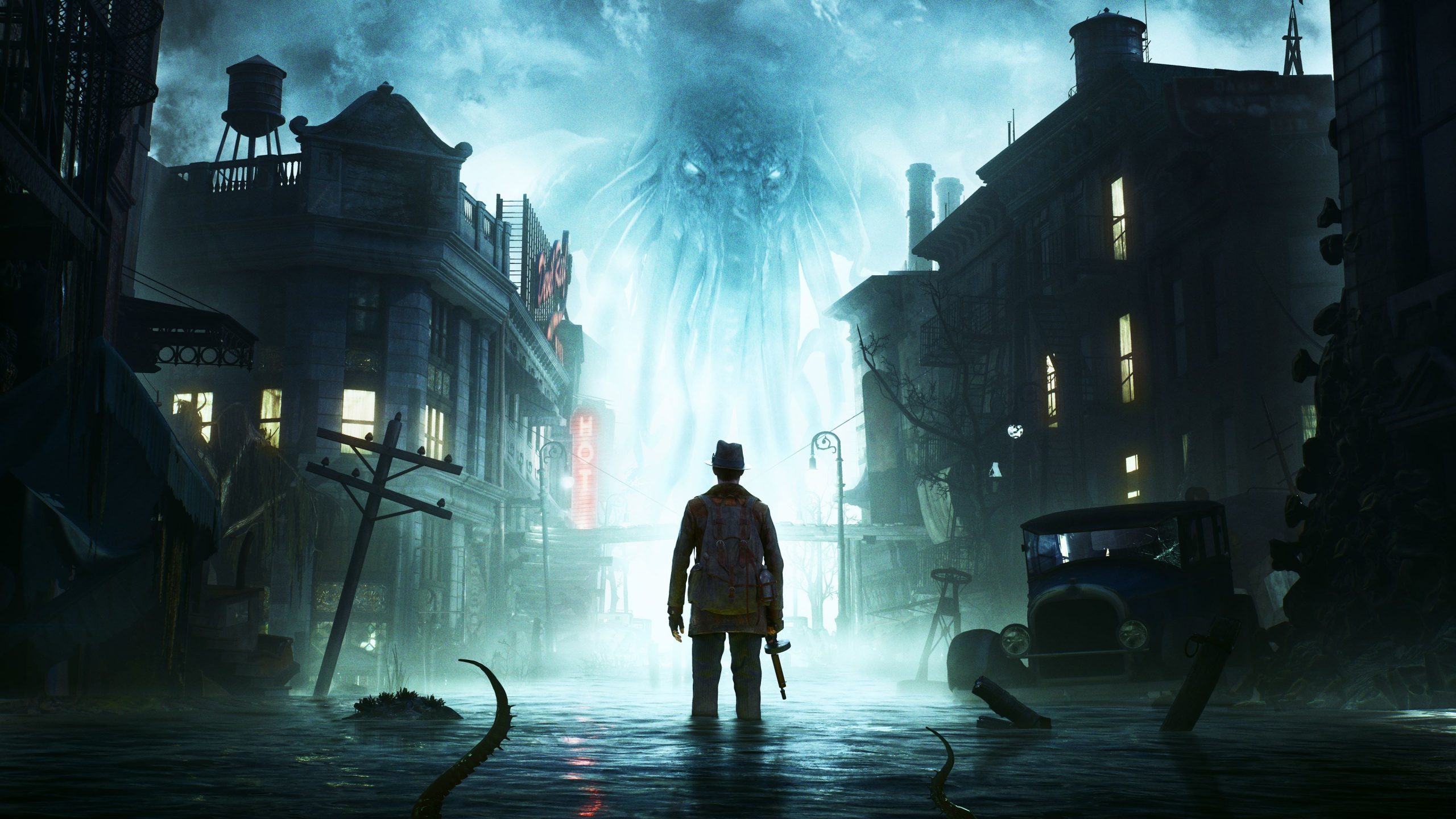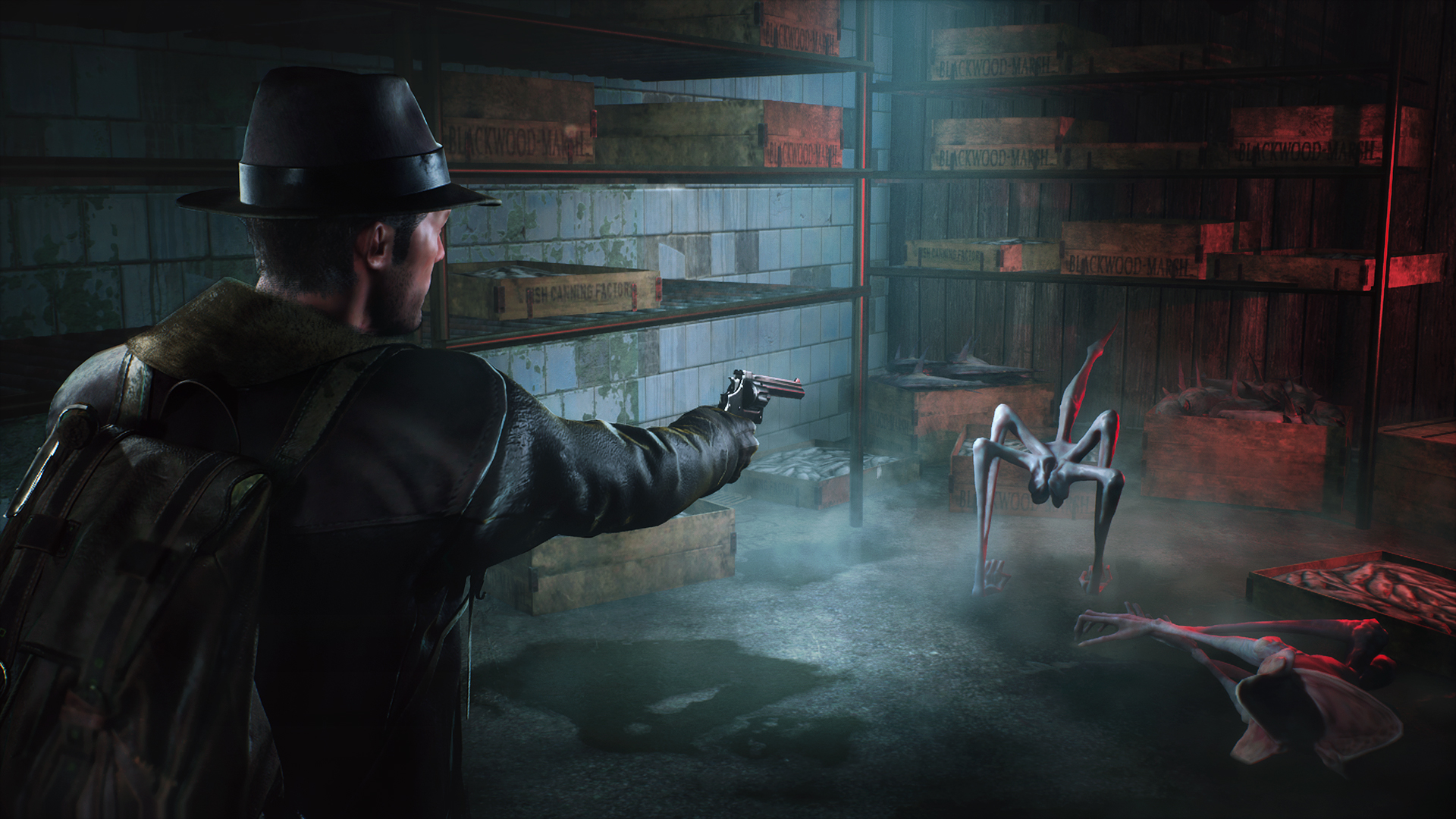Through his vision and style of painting, HP Lovecraft has motivated hundreds of artists from a variety of disciplines to express themselves. People who are not familiar with the American author should realise that Lovecraft was a prodigy who went unnoticed in his own time.
He is most renowned for writing strange science fiction, horror, and fantasy stories. His development of the imaginary world known as The Cthulu Mythos, on which many video games have been based, is undoubtedly his most well-known achievement.
Lovecraftian games have become more common in recent years, with different degrees of success, but The Sinking City stands out above the others for its unique combination of an odd and cosmic story with awkward but adequate third-person gameplay.
It draws you into a complicated cosmos full of the strange and uncanny horrors that every Lovecraftian tale deserves, but it does it in a fresh yet reverent way while others may have continued down the same paths that were set almost a century ago. Although this pulpy 1920s narrative from developer Frogwares has its delights, the repetitive parts might even be downright unsettling.
The Sinking City breaks new territory in terms of genre to set itself apart from its Lovecraftian cousins. Whereas Call of Cthulhu (2018) tried to carve out a tiny space to tell its own stand-alone story that tucked itself into the already existing cosmic lore, this game feels like it is picking up eight movies into a Lovecraft cinematic Cthu-universe, delivering a concentrated dose of its distinctive flavour.
The game starts with Mister Robert Throgmorton, an essential figure who appears to be half-ape, half-human, being introduced to the protagonist, Charles Reed. “Facts Concerning the Late Arthur Jermyn and His Family,” a short story by H.P. Lovecraft, is referenced here.
A run-in with the Innsmouthers, who are basically fish people from another story, follows soon after. It takes so many storylines, quotes, and motifs from Lovecraft’s works that it reverently captures the excitement and interest of these pulpy tales while blending them in a unique way. In the midst of its true-to-genre tale, it generates political and criminal intrigue.So, let’s get into the plot first.
A Lovecraftian Mystery Which Will Take You Back in Time

The game is set in the fictional city of Oakmont, Massachusetts in the 1920s, and it follows a private detective and army veteran Charles W. Reed as he seeks answers to the mysterious visions tormenting him, as well as the mystery of Oakmont’s relentless flooding.
It is quickly established that Oakmont has a long history of occult ties, and many of its residents are not simply odd, but outspoken occult practitioners. Cultists dressed in grisly ceremonial costume rub shoulders with fisherman, ordinary townfolk, refugees fleeing the destruction of nearby Innsmouth, the destitute and desperate, and well-heeled representatives of the upper class on the streets.
Over time, the town acquired its own dialect, but the origins of many expressions are unknown. Oakmont was cut off from the mainland six months ago by a mystery, recurring flood of supernatural origin that flooded many of its streets and submerged many of its streets.
The “Flood,” as Oakmonters call it, brought with it a terrible power that gradually instills panic and lunacy in the scared residents’ brains, and the struggling town is on the verge of collapse. Furthermore, a slew of individuals lost outside of Oakmont has begun popping up in the town, drawn by disturbing, unexplainable visions. Robert Throgmorton, the powerful and physically intimidating leader of one of Oakmont’s main families who has also been researching the visions, hires Reed to assist him to figure out what’s causing the town’s flood.
While Reed pursues this and other investigations with extrasensory skills of observation presumably gifted by his visions, he must preserve his sanity as it is corroded by the town’s darkness, otherworldly monsters attracted to death known as Wylebeasts, and the usage of his own powers. Reed’s pursuit for answers leads him to a scheme by the Great Old Ones to wipe humanity off the face of the earth.
Its not a long story, Saying anything else will be potential spoilers just remember there can be 3 different endings based on the decisions you choose.
Third Person Investigative Fest

The most intriguing aspect of the game is the gameplay style. It’s a third-person detective game set in an open-world setting. It has an investigative system in which how observant the players are when studying various clues and pieces of evidence will frequently determine the outcome of the player’s tasks. Advent, Coverside, Grimhaven Bay, Oldgrove, Reed Heights, Salvation Harbor, and The Shells are among the seven districts of Oakmont that have been flooded to varying degrees, and the player must utilise a boat to safely navigate the flooded streets to reach drier places.
If necessary, the player can swim, although the water is infested and can be devastating to the player’s health and sanity. In addition, the player must construct an arsenal of tools and weapons, which he or she must employ to kill strange monsters and dispel hallucinations at times. Due to Oakmont’s isolation, limited resources, and collapsing social order, bullets have supplanted money as the favoured currency; however, using too many bullets may prevent the player from bartering for desired commodities.
Another important resource is sanity, which is utilised to reconstruct crime scenes and find clues through investigative powers. Sanity regenerates slowly on its own, although antipsychotic medicines can speed up the process. Scenes and confrontations that are disturbing can induce quick, sharp reductions insanity, impairing the player’s perspective of the world, and total loss of sanity is deadly.
Combat, discoveries, monsters, macabre and otherworldly images, and the visions that spurred Reed down this path in the first place progressively take a toll on both his health and sanity, as one might expect from a Lovecraftian game. As a result, you may experience some distressing psychological crises, illusions, or psychosis.
The characters you contact with, on the other hand, are engaging and well-acted, and you might be surprised by how unique and thematically fitting each character is written and done. Every encounter, from mob bosses to cult leaders to dishonest politicians and more, felt unique and added to Oakmont’s lived-in vibe. Regrettably, this shone a bright light on the blatantly recycled character models. It’s especially evident since every black man you speak with has the same comical appearance.
Talking about the game’s development, Developer Frogwares envisioned the open-world environment of Oakmont as a densely-built metropolis region two kilometers square when creating The Sinking City. Because handcrafting the entire town was impractical, Frogwares went to Unreal Engine 4 and used city generation techniques pioneered by Ubisoft’s Assassin’s Creed franchise to generate entire blocks of Oakmont at once using procedural generation.
Marvelous Gamers Verdict

The Sinking City’s construction of a new Lovecraftian vision, along with fascinating narrative, exciting landscapes, and unforgettable characters, results in one of the best Cthulhu mythology games you’ll ever play. Its dedication to subtly modernising storytelling techniques while keeping Lovecraft’s setting and tone show through the tedium and aggravation.
The monsters you encounter are intriguing and suitable, but there are only a few sorts. Optional side quests, on the other hand, provided some interesting possibilities not found on the main path. There are also no boss fights, which I thought was a major flaw in a game about defeating epic beasts and old gods.
Moving around the map is difficult and time-consuming. This is especially true early on in the game when you’re forced to stomp your way across the world before unlocking fast-travel places. Quest goals in most games radiate outward from a central place, but The Sinking City attempts to show off its different districts by sending you through them one by one. If getting about the city was difficult, the research system was excruciatingly tedious.
In the most perplexing of ways, quest information is frequently obscure and borderline meaningless. By visiting one of four archive locations, each of which is related to a distinct type of research that needs to be done, you’re forced to interpret ambiguous material in order to unearth proof.
This is, as far as I can tell, a continuation of Frogwares’ prior Sherlock Holmes series. While the concept is attractive, the execution can be time-consuming. In contrast, you might really enjoy another investigation and discovery mechanism called the Mind Palace, which also was inspired by the Sherlock games but improved by the inclusion of moral issues from Lovecraftian fiction.
The Mind Palace is frequently fueled by a Retrocognition function that allows you to observe how an object was used in the past or see spectral manifestations of characters reenacting a scene Reed was not present for. You next put the scene’s pieces in the order you think they happened until you’ve successfully recreated it, obtaining crucial knowledge in the process. Those of you who have played Arkham Origins know what I am talking about.
As The Sinking City drew to a close, you’ll notice that every figure who had a significant role in the story fell into the morally grey category, which can provide fascinating moral examples for the judgments you make. It may help you appreciate the developers’ attention to detail and devotion to intrigue and surprise.
This commitment to moral ambiguity resulted in a satisfying conclusion that was more than just a binary, good/bad choice. Critics and reviewers praised the game’s writing, world-building, and lack of spoon-feeding in discovering and coming to a conclusion from clues to solve cases, but panned the combat as slow and frustrating, and pointed out a number of technical issues, including excessively long loading times and screen tearing. However, We here at Marvellous Videos think the game’s plot twists, character writing, and memorable moments are quite brilliant and no one should be disappointed while playing it.
That’s it for this one, let us know in the comments section which game do you want us to cover next and, if you liked this video then please don’t forget to give it a like, share and subscribe to our channel. See you in the next one.
